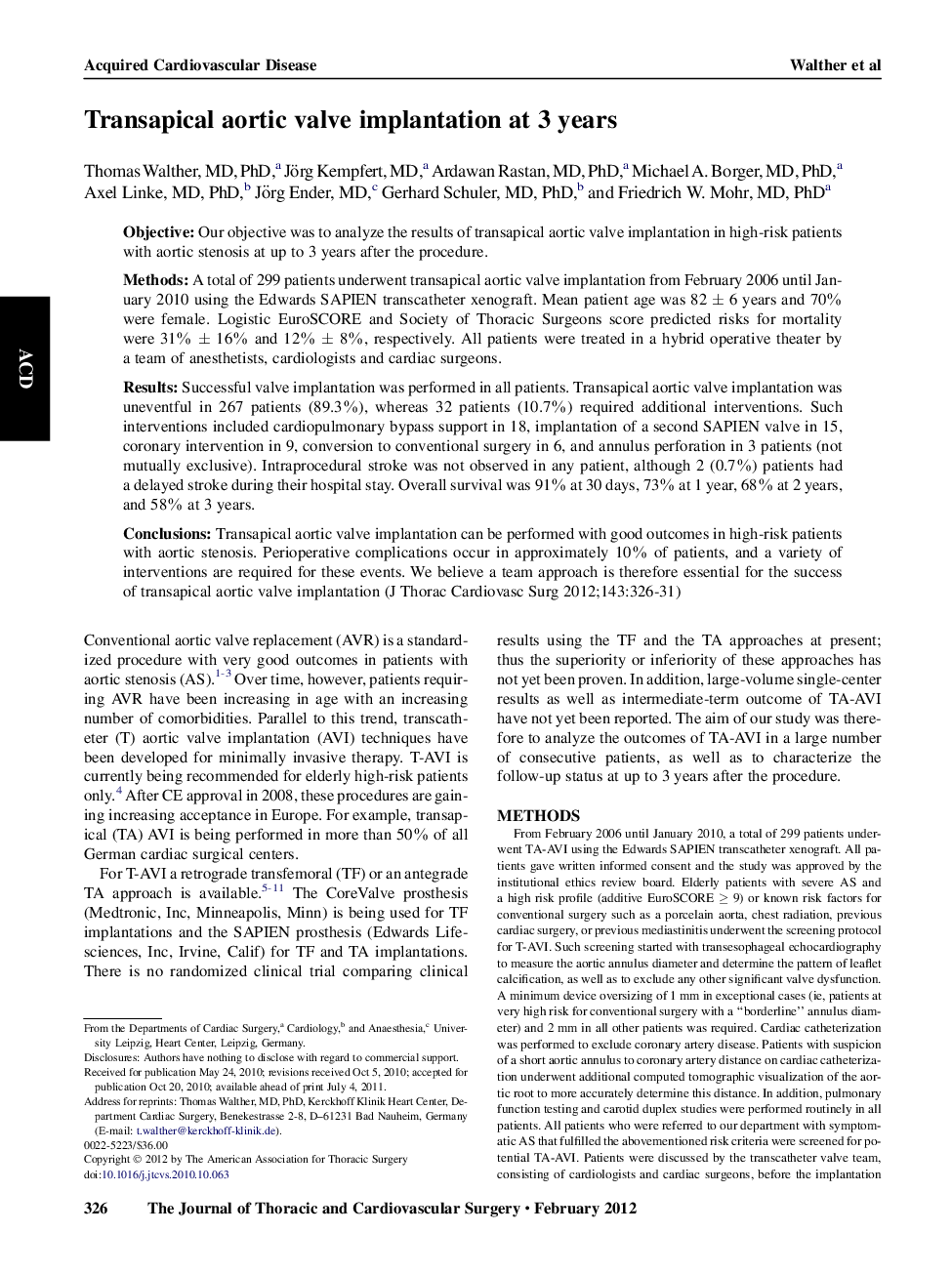| Article ID | Journal | Published Year | Pages | File Type |
|---|---|---|---|---|
| 2981446 | The Journal of Thoracic and Cardiovascular Surgery | 2012 | 6 Pages |
ObjectiveOur objective was to analyze the results of transapical aortic valve implantation in high-risk patients with aortic stenosis at up to 3 years after the procedure.MethodsA total of 299 patients underwent transapical aortic valve implantation from February 2006 until January 2010 using the Edwards SAPIEN transcatheter xenograft. Mean patient age was 82 ± 6 years and 70% were female. Logistic EuroSCORE and Society of Thoracic Surgeons score predicted risks for mortality were 31% ± 16% and 12% ± 8%, respectively. All patients were treated in a hybrid operative theater by a team of anesthetists, cardiologists and cardiac surgeons.ResultsSuccessful valve implantation was performed in all patients. Transapical aortic valve implantation was uneventful in 267 patients (89.3%), whereas 32 patients (10.7%) required additional interventions. Such interventions included cardiopulmonary bypass support in 18, implantation of a second SAPIEN valve in 15, coronary intervention in 9, conversion to conventional surgery in 6, and annulus perforation in 3 patients (not mutually exclusive). Intraprocedural stroke was not observed in any patient, although 2 (0.7%) patients had a delayed stroke during their hospital stay. Overall survival was 91% at 30 days, 73% at 1 year, 68% at 2 years, and 58% at 3 years.ConclusionsTransapical aortic valve implantation can be performed with good outcomes in high-risk patients with aortic stenosis. Perioperative complications occur in approximately 10% of patients, and a variety of interventions are required for these events. We believe a team approach is therefore essential for the success of transapical aortic valve implantation
